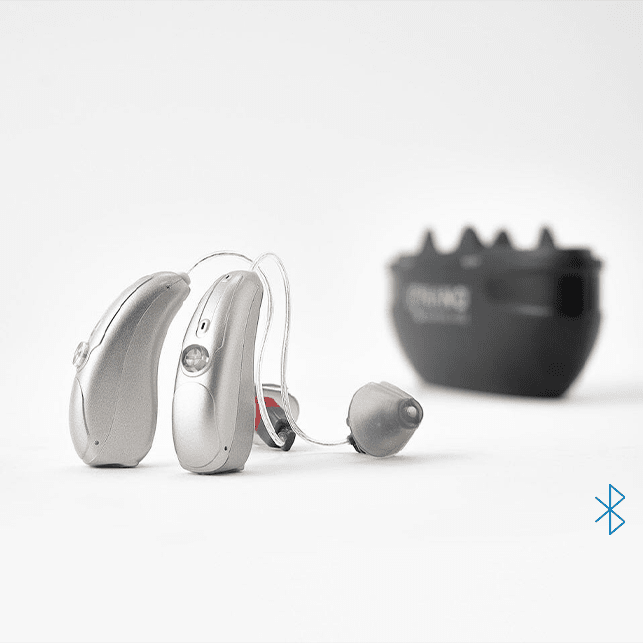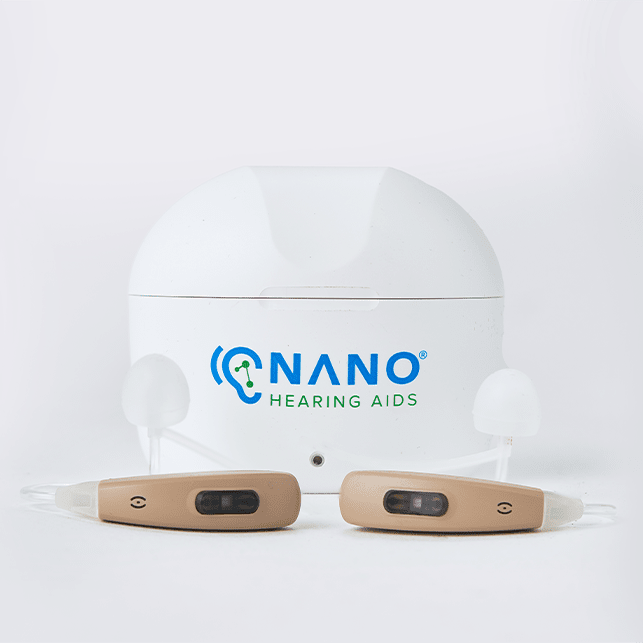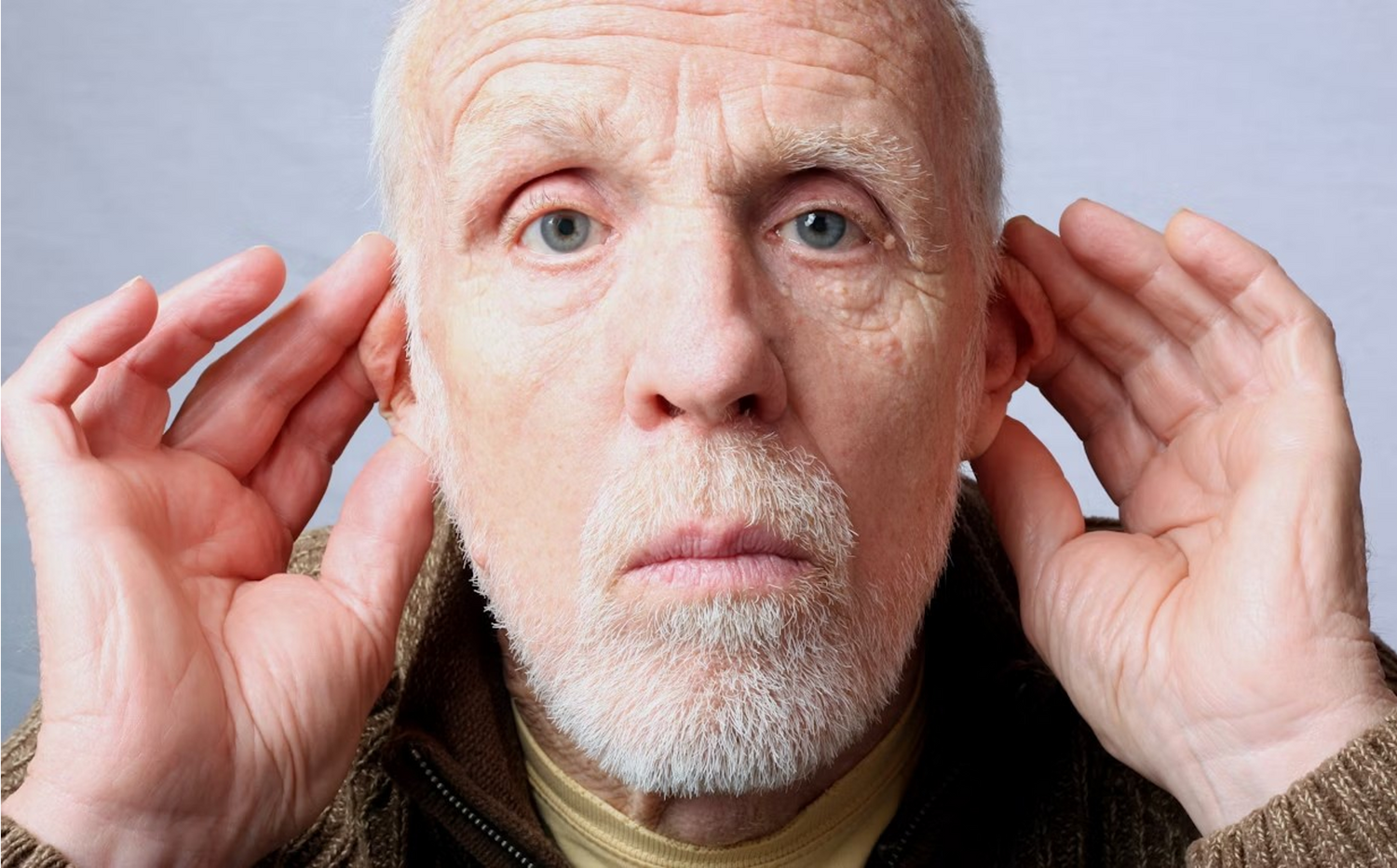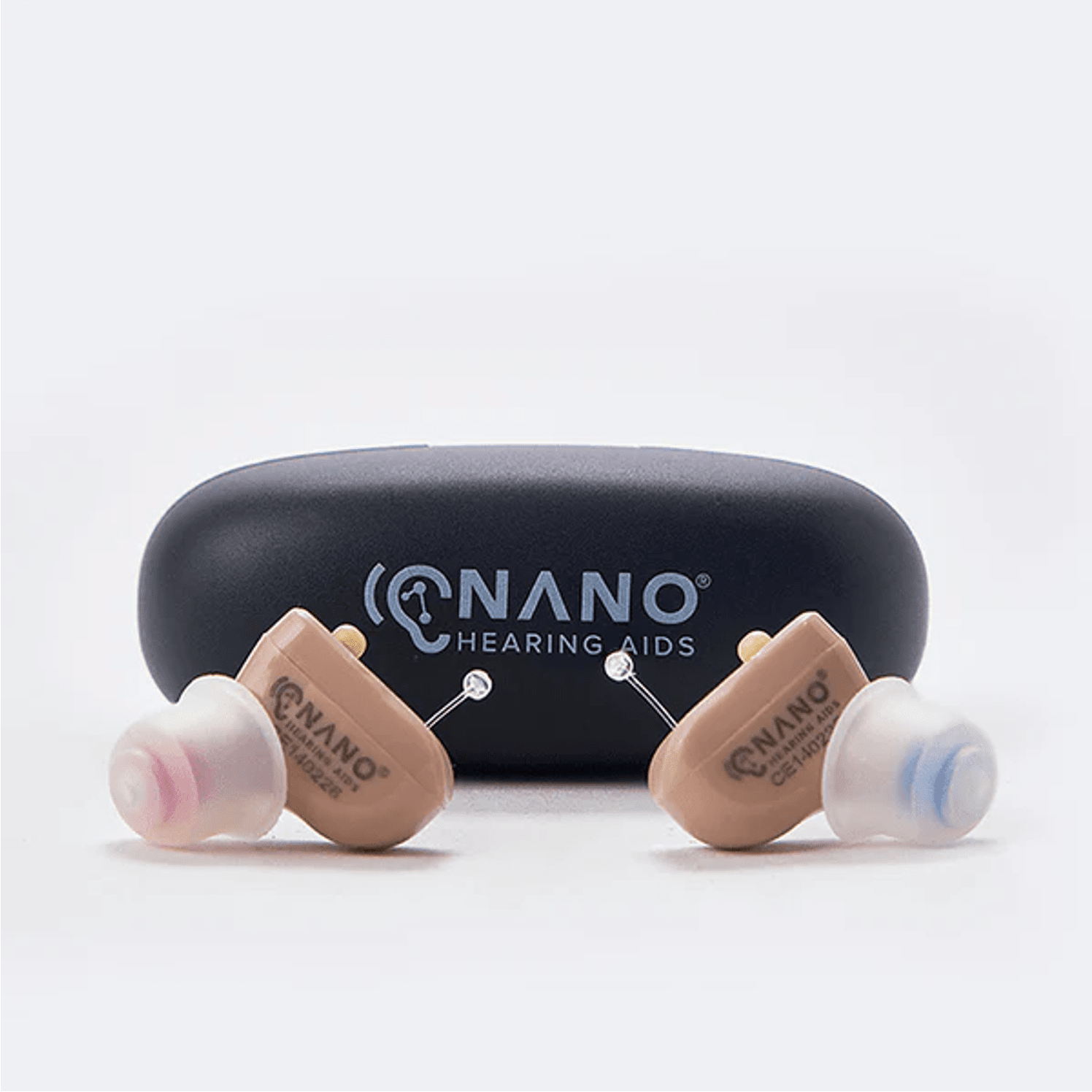Key Takeaways
- Bone Anchored Hearing Aids (BAHA) are surgically implanted devices that send sound through the bones of your skull to your inner ear.
- Personal Sound Amplification Products (PSAP) are non-prescription devices that amplify environmental sounds for users with normal hearing.
- BAHA is suitable for individuals with conductive or mixed hearing loss, while PSAPs are generally for those with normal hearing.
- BAHA involves a surgical procedure and costs more, whereas PSAPs are cheaper and available over-the-counter.
- Nano OTC Hearing Aids, including the First Ear Pro CIC and Audacity RIC, are FDA-registered, Class I medical devices offering a non-surgical solution for perceived mild to moderate hearing loss.
NANO Hearing Aids are FDA-registered, Class I devices. Our OTC hearing aids are designed for individuals over 18 years of age with perceived mild to moderate hearing impairment. With prices starting at just $297, they offer a viable solution for those looking to improve their hearing without breaking the bank.
What are Bone Anchored Hearing Aid (BAHA) and Personal Sound Amplification Products (PSAP)
BAHA are surgically implantable devices that send sound waves through the bones of the skull directly into the cochlea - bypassing the outer and middle ear. Ideal for conductive or mixed hearing loss, their user groups include those who cannot use traditional hearing aids due to chronic ear infections, congenital ear malformations, or single-sided deafness.
PSAPs amplify environmental sounds - and are not intended for people with hearing loss. Designed for enhancing hearing in specific situations like bird watching or listening to distant conversations, PSAPs are available over-the-counter, more affordable, and lack the sophisticated technology found in hearing aids.
How BAHA Works
- 1. A small titanium implant is surgically placed in the bone behind the ear.
- 2. After healing and fusion with the bone, an external sound processor is attached.
- 3. The sound processor captures sound waves and converts them into vibrations.
- 4. These vibrations travel through the skull bone directly to the cochlea, where they are processed as sound.
How PSAPs Works
- 1. The device captures sound from the environment using a built-in microphone.
- 2. It amplifies these sounds and delivers them to the ear through a speaker.
Differences Between BAHA and PSAPs
- Purpose: BAHA is for conductive or mixed hearing loss; PSAPs are for those with normal hearing who want to amplify environmental sounds.
- Technology: BAHA uses bone conduction to transmit sound directly to the cochlea; PSAPs simply amplify all sounds.
- Cost: BAHA involves surgical implantation and is more expensive; PSAPs are cheaper and available over the counter.
- Availability: BAHA requires a medical procedure and professional fitting; PSAPs can be purchased without a prescription.
Examining a Bone Anchored Hearing Aid (BAHA): Professional fitting and adjustment for optimal performance.
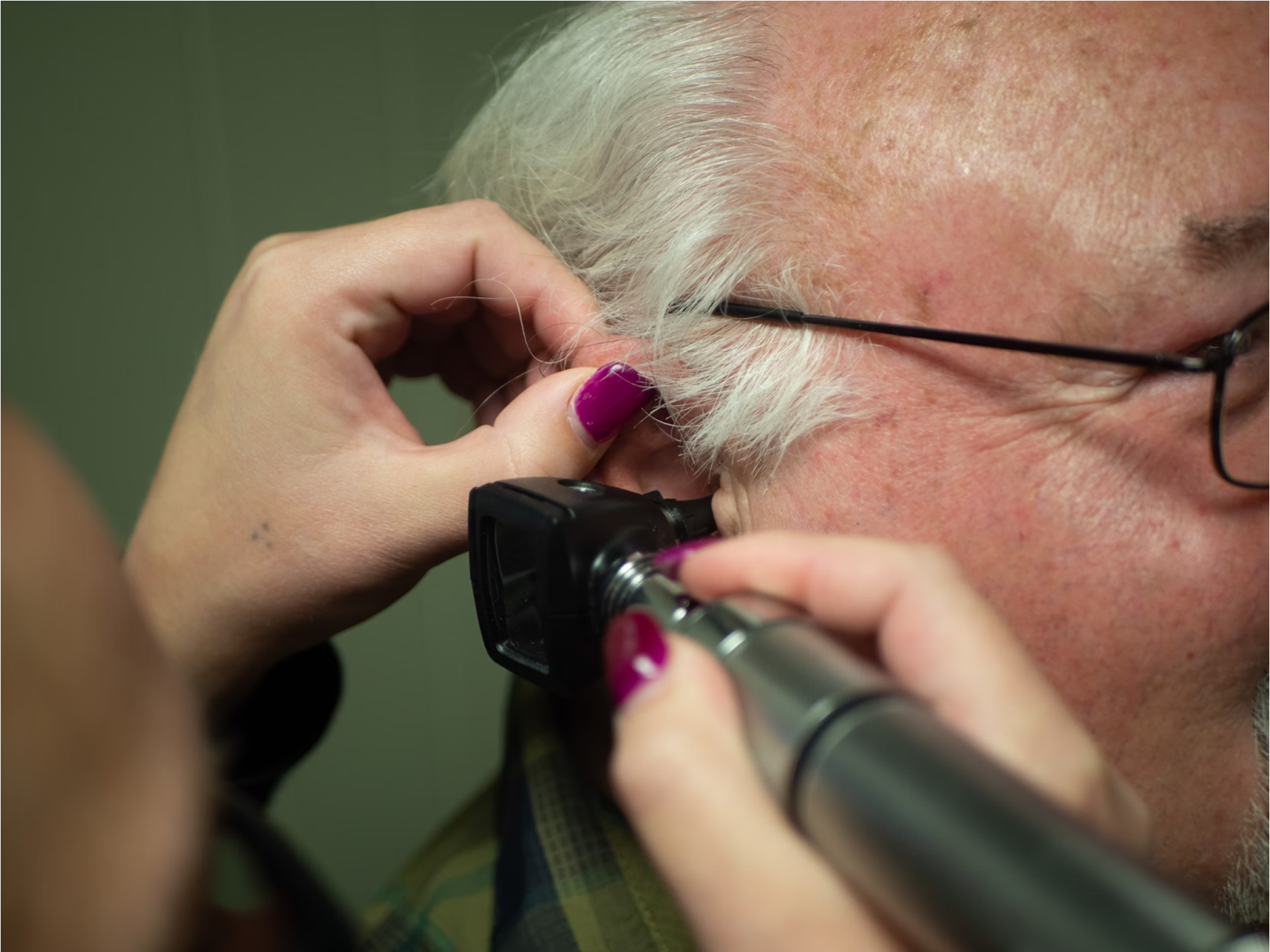
Technological Components
BAHA:
- Titanium Implant: Surgically placed in the bone behind the ear, anchoring external components.
- External Connector: Connects the implant to the sound processor, transmitting vibrations.
- Sound Processor: Captures sound waves, converts them into vibrations, and sends them through the external connector to the titanium implant.
PSAPs:
- Microphone: Captures environmental sounds.
- Amplifier: Boosts the volume of the captured sounds.
- Speaker: Delivers the amplified sounds to the user's ear.
- Battery: Powers the device, often requiring regular replacement or recharging.
Cost Comparison
BAHA:
- Cost: $10,000 - $15,000
- Additional Expenses: Surgical fees, follow-up appointments, potential maintenance costs
PSAP:
- Cost: $100+
- Additional Expenses: Battery replacements, occasional maintenance
Pros and Cons
Pros & Cons of BAHA
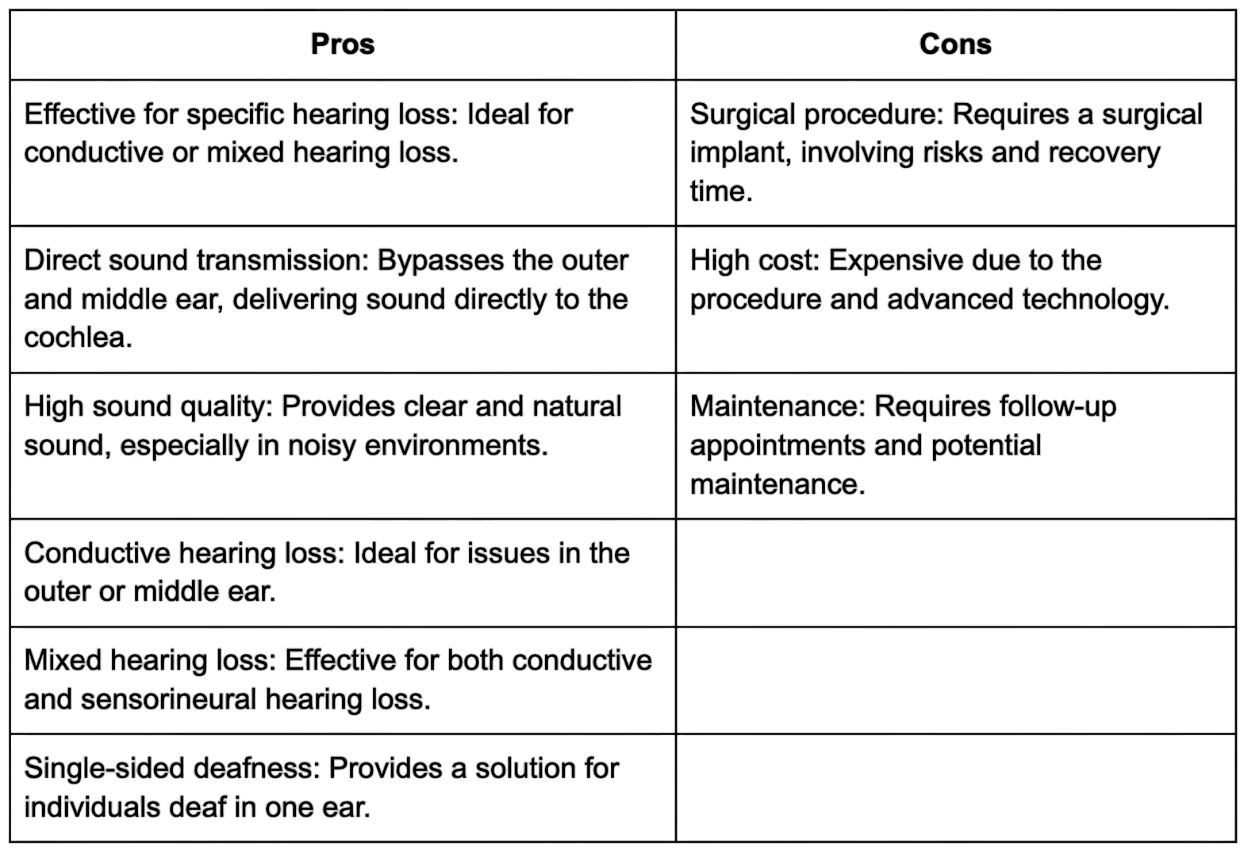
Pros & Cons of PSAPs
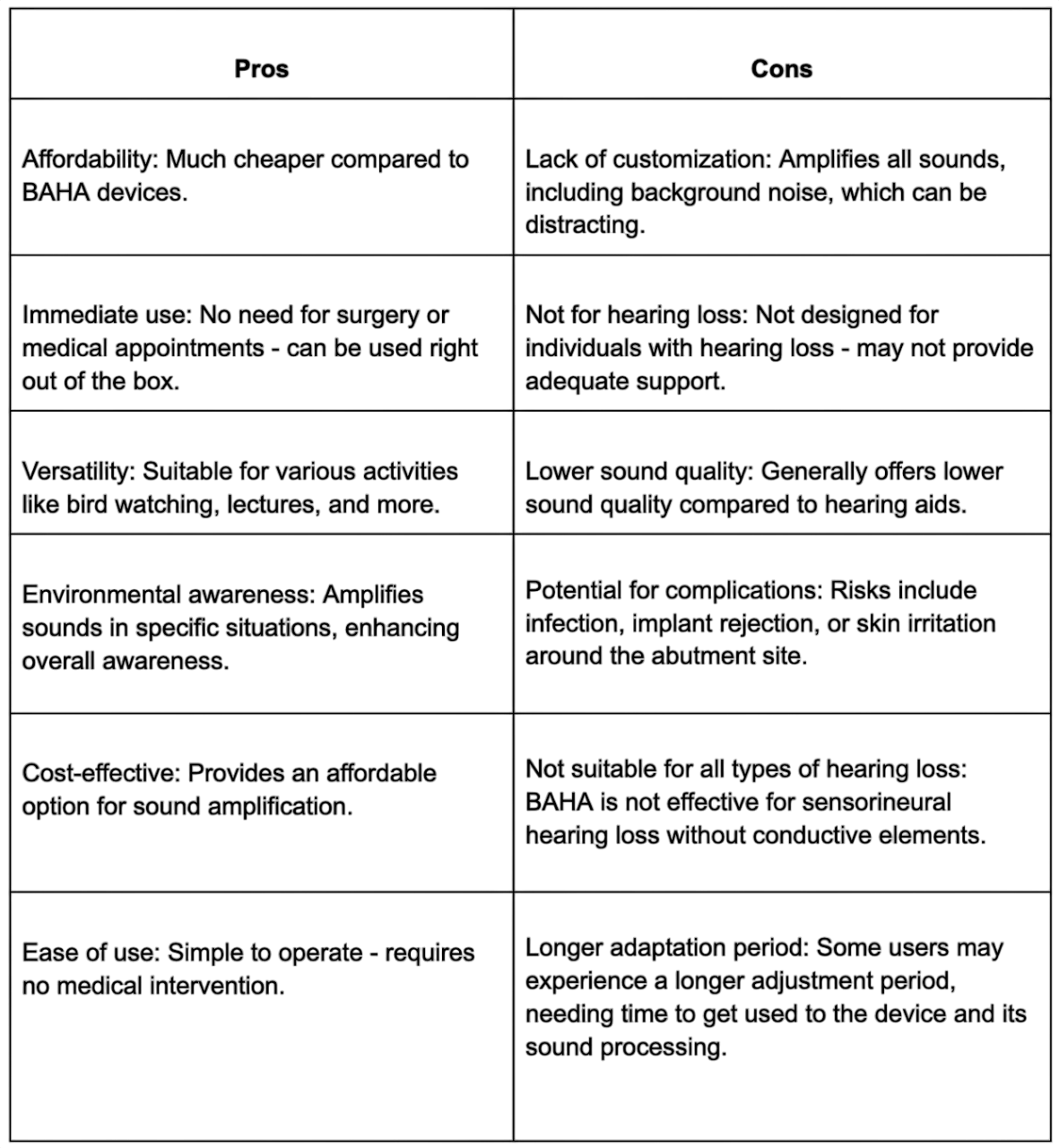
Suitability for Different Types of Hearing Loss
- BAHA: Best for conductive, mixed hearing loss, and single-sided deafness.
- PSAPs: Suitable for individuals with normal hearing needing sound amplification in specific situations.
Suitability for Different Types of Hearing Loss
BAHA: Ideal for conductive or mixed hearing loss and single-sided deafness, bypassing the outer and middle ear to deliver sound directly to the cochlea.
PSAPs: Not designed for hearing loss, more suitable for those with normal hearing needing sound amplification in specific environments.
How Nano Hearing Aids Are Different
First Ear Pro CIC: Compact, nearly invisible hearing aids with advanced feedback cancellation and noise management.
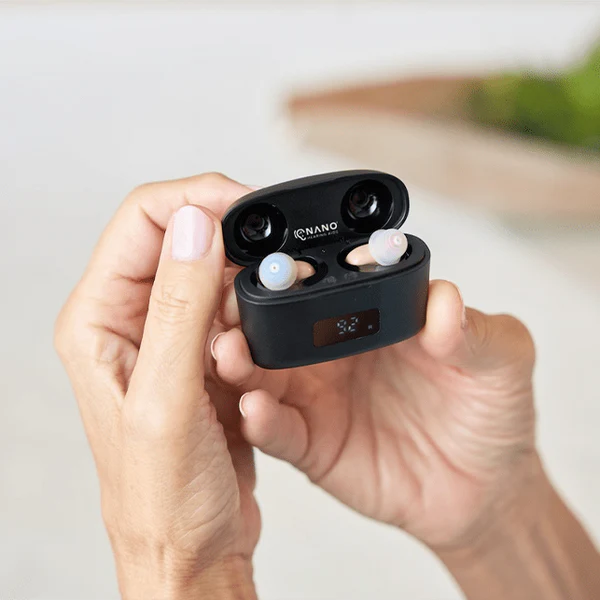
At Nano Hearing Aids, with over seven years of experience, we offer FDA-registered, Class I medical devices providing safe, effective hearing solutions.
Unlike PSAPs, our hearing aids are designed for perceived mild to moderate hearing loss - offering superior customization and sound quality. Our over-the-counter (OTC) hearing aids are accessible and easy to use—no prescription or medical appointment is needed.
Nano Hearing Aids come with advanced features like wireless technology, self-assessment tests, and customizable settings - allowing users to tailor their hearing experience.
Models like the First Ear Pro CIC and Audacity RIC ensure high-quality sound and user-friendly interfaces, making Nano Hearing Aids a practical, reliable choice for those looking to improve their hearing.
Frequently Asked Questions
Who is a good candidate for BAHA?
BAHA is suitable for individuals with conductive or mixed hearing loss and those with single-sided deafness.
It is beneficial for people who cannot use traditional hearing aids due to chronic ear infections or congenital ear malformations.
Can PSAPs be used as an alternative to hearing aids?
PSAPs are not a replacement for hearing aids. They are designed for individuals with normal hearing to amplify environmental sounds in specific situations. For diagnosed hearing loss, a medical-grade hearing aid is a more appropriate, effective solution.
What are the costs involved with BAHA and PSAP?
BAHA devices are more expensive, typically starting from $10,000 to $15,000 - including surgical fees and follow-up appointments. PSAPs are much cheaper, starting from $100.
How long does it take to adapt to BAHA or PSAP?
Adapting to BAHA involves a recovery period after surgery, followed by fitting and adjustment - this process can take several weeks to months. PSAPs can be used immediately out of the box, with minimal adjustment time required.
Why Should I Choose Nano Hearing Aids?
Nano Hearing Aids offer a non-invasive, safe alternative to BAHA and PSAPs. Unlike BAHA, which requires surgery and carries risks like infection and implant failure, our hearing aids are over-the-counter, avoiding these complications.
Unlike PSAPs, which can amplify background noise and may not be tailored for hearing loss, Nano hearing aids, including the First Ear Pro CIC and Audacity RIC models, are designed for perceived mild to moderate hearing loss, providing clear and customizable sound quality.

